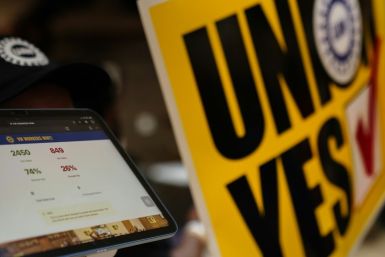Tennis official’s comments highlight sexism in Tennis, but equal pay issue extends to all sports

What started out as careless sexist comments regarding female tennis players by the CEO of Indian Wells, a popular tennis tournament in the US, has escalated into a debate about whether female athletes of the sport should receive the same prize money as their male counterparts.
Speaking at a conference for the tournament, CEO Raymond Moore was asked to comment on the Women’s Tennis Association (WTA) and answered with remarks that shocked the tennis world.
Moore stated that women’s tennis was only successful and popular because the players rode “on the coat-tails of the men”.
‘‘If I was a lady player, I’d go down every night on my knees and thank God that Roger Federer and Rafa Nadal were born, because they have carried this sport. They really have."
Moore’s comments sparked immediate backlash from tennis athletes, including former tennis player Billie Jean King who let her disappointment be known via twitter.
Disappointed in #RaymondMoore comments. He is wrong on so many levels. Every player, especially the top players, contribute to our success
— Billie Jean King (@BillieJeanKing) March 20, 2016
Serena Williams, current world number 1, had more to say:
"I don't think that is a very accurate statement. I think there is a lot of women out there who are very exciting to watch. I think there are a lot of men out there who are very exciting to watch. I think it definitely goes both ways. I think those remarks are very much mistaken and very, very, very inaccurate… There's only one way to interpret that. Get on your knee, which is offensive enough, and thank a man, which is not - we, as women, have come a long way. We shouldn't have to drop to our knees at any point."
The situation was only made worse after men’s world number 1, Novak Djokovic, turned the issue into one about equal prize money. While the tennis superstar shared he was "completely for women power", he also said the situation was “very delicate”, and that men should fight for more winnings.
“I applaud them for that, I honestly do. They fought for what they deserve and they got it,” the Djoker said.
“On the other hand I think that our men’s tennis world, ATP world, should fight for more because the stats are showing that we have much more spectators on the men’s tennis matches. I think that’s one of the reasons why maybe we should get awarded more. Women should fight for what they think they deserve and we should fight for what we think we deserve.”
While the issue of equal pay in tennis seemingly came to an end in 2007, when Wimbledon became the last grand slam to offer unequal prize money to its players, the topic is once again being talked about.
But what about the pay differences in other sports between men and women, how do they measure in comparison? Is it justified to pay male athletes more if they draw a bigger crowd?
GOLF
The WomensSportsFoundation.org, which makes note of the gender inequity in professional sports, highlights that the total prize money for the 2014 PGA tour came in at over $340 million, five times more than that of the 2015 LGPA Tour which was still the highest amount of prize money the tour had awarded.
BASKETBALL
The issue of unequal pay is also evident in professional basketball, where the average league salary for female players in 2014 was $72,000 while the minimum base salary for a male basketballer with zero years in the NBA is $525,093, which is more than seven times the average salary for an NWBA player in 2014.
SOCCER
When it comes to women in sports in Australia, one of the biggest controversies last year was the pay dispute between Australia’s women’s national soccer team, the Matildas, and the Football Federation Australia.
It was discovered each member of the Matildas team had only earned $500 in match fees while the Socceroos were each earning $7,500. If the Matildas were to qualify for the final, they would have earned a total of $5,600 while the Socceroos had the opportunity to win $69,000 if they made the 2014 World Cup final.
Furthermore, the Matildas players are said to each draw in a yearly salary of $21,000 a year, which is less than the minimum wage in Australia regardless of profession. Ultimately, after several weeks of negotiations and interim deals, the Matildas signed a new contract, which saw them with a wage of $41,000 a year, not including any club money or allowances.
But does that mean that gender equality within the sport was achieved? Because while the Matildas received the pay increase they were fighting for, they are still not earning the same as their male counterparts.
This is the case in many sports but is tennis star Novak Djokovich’s arguments that male tennis stars should be paid more because they attract more crowds justified? And if so, can the same be said for athletes in other sports?






